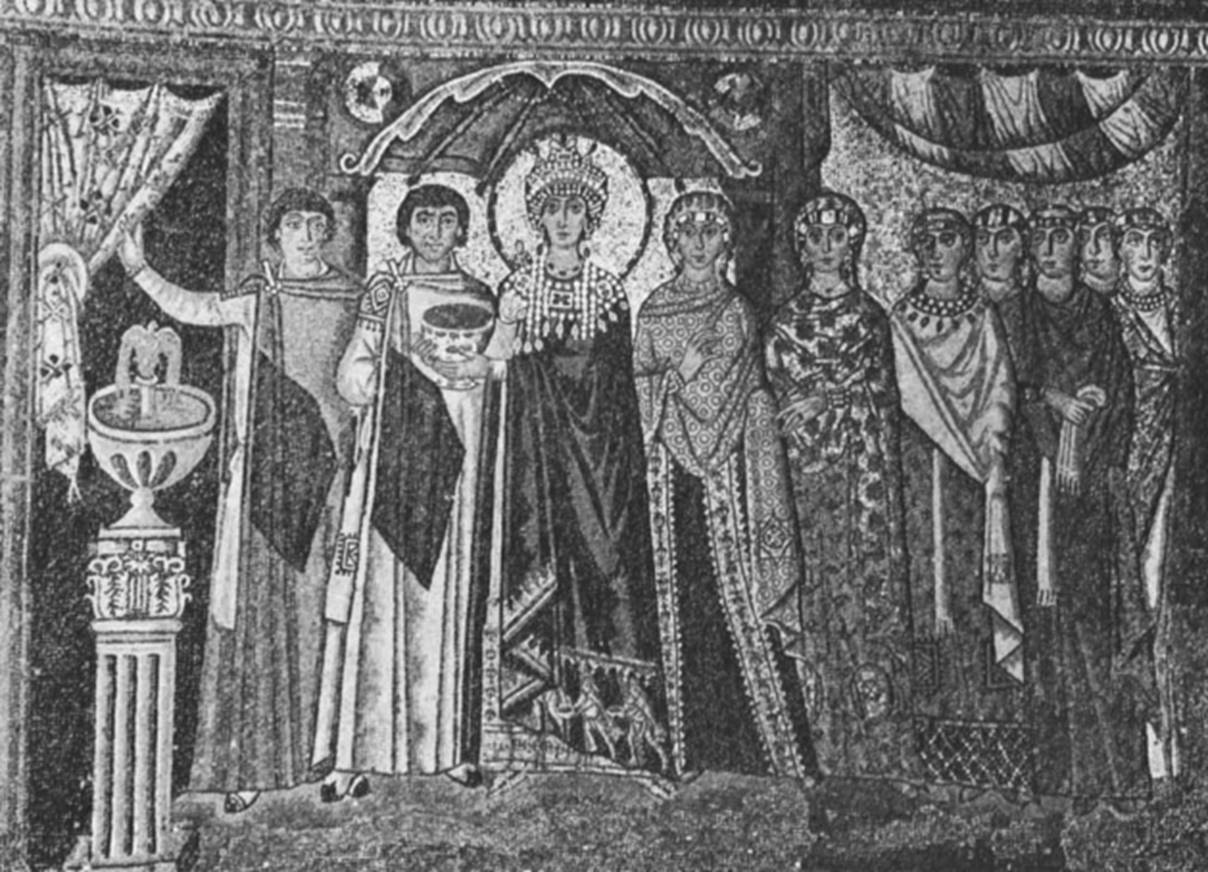Apse decoration of S. Vitale
The emperor Justinian and Archbishop Maximianus and members of their courts. The empress Theodora and members of her court
These imperial scenes are the only figures of living contemporaries to share with the conch image of Christ enthroned the sacred space of the apse in the church of S. Vitale. They contribute an aura of courtly formality to the extensive program, which covers the entire presbytery, as well as provide a bridge between the wor-lds of the faithful and the divine. Integral with the mosaic scheme, these panels were probably complete before the consecration of the church in May 547.

65: In an indeterminate architectural setting appear Justinian, carrying a gold bowl or paten, and Maximianus, archbishop of Ravenna (546-556), with an emerald-studded processional cross. Between them is a man usually identified as Julianus Argentarius, the wealthy patron of this and other churches in Ravenna (Deichmann, 1969, I, pp. 241-242, prefers to identify this person as an imperial representative, perhaps the Praefectus Praetorio Italiae).
The emperor is distinguished as much by the bulk of his purple mantle and jewels as by his centralized position and halo, a sign of distinction to connote honor and reverence. To the left are court officials and the imperial bodyguard (cf. no. 64); to the right are deacons, holding the evange- lium and a censer, leading the procession.
66: Theodora, preceded by court officials and followed by ladies-in-waiting, carries a gold chalice. She, too, is singled out by her extraordinary jewels, halo, and focal—though not centralized —position beneath the scalloped niche. The scene takes place in an atrium, the door leading into the church; the fountain at the left is a standard element of Early Christian churches.
These scenes, understood as the same procession, make up the earliest extant representation of an imperial donation (Grabar, 1936, p. 106; Grabar, 1960). The theme is underscored by the scene of the three gift-bearing Magi applied to the empress' mantle. Emphasis is placed on the two converging ceremonies of presentation in the mosaic program: the giving of gifts to the church and the appearance of Justinian, Maximianus, and Theodora before the omnipotent Christ above.
No source reports a visit to Ravenna by this imperial couple, so the ensemble must be understood symbolically. Along with Italy and parts of North Africa, Ravenna had been recently won back by Byzantine forces from various Gothic tribes. These imperial images, then, signify the reunification of the empire under Constantino- politan power.
The subtlety of expression in these portraits, most likely executed by Ravennate artists, bears witness to a keen psychological awareness and a highly developed technique. The ambiguous space and peculiar tension between movement and stasis, confounded by the overlapping feet, and the visual appeal of the brilliantly colored surface, augmented by a constant variety of gesture, glance, and pattern, contribute appreciably to the awesome impact of these mosaics. Bibliography: Volbach (1), 1962, nos. 164, 165.
Date added: 2025-07-10; views: 44;
